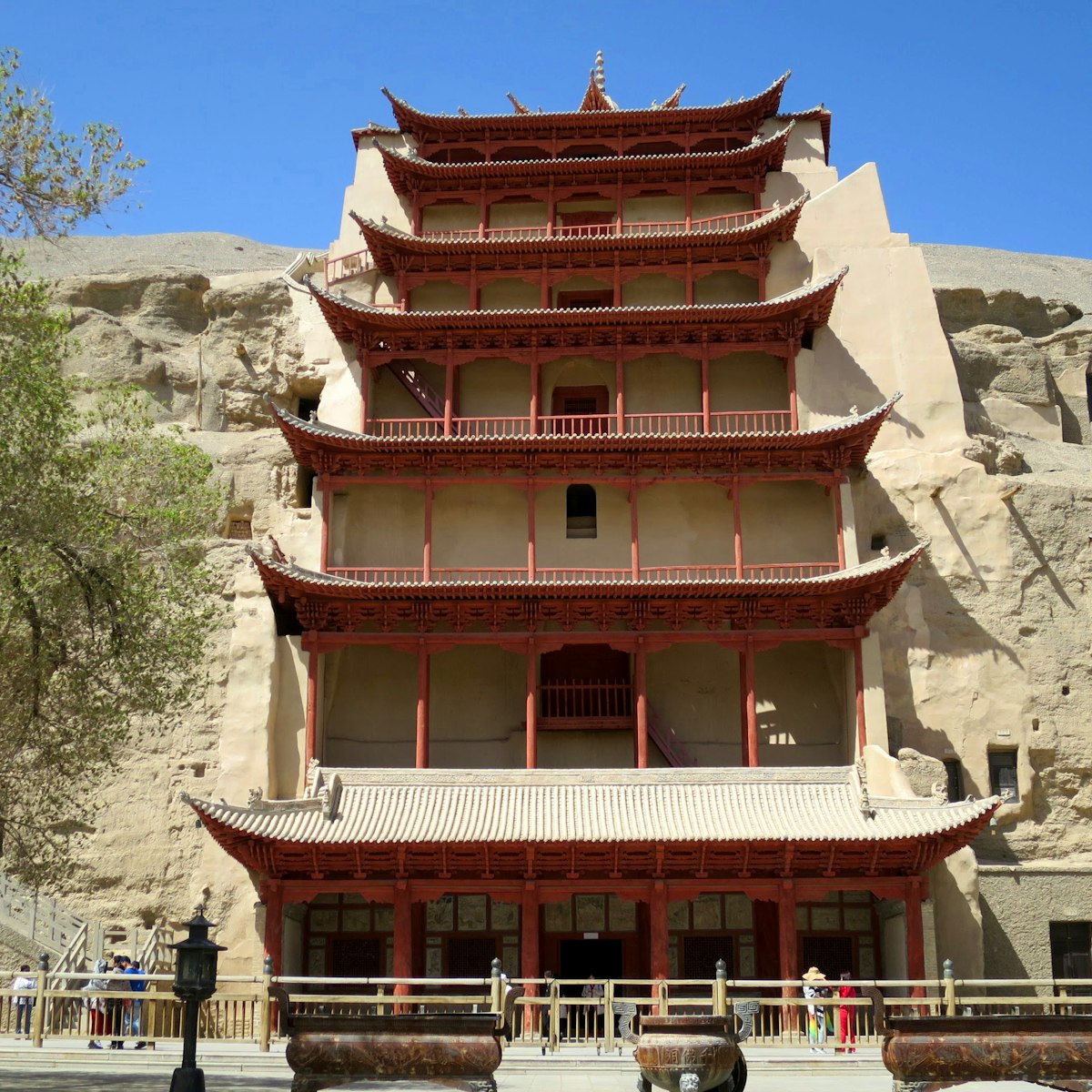
Dunhuang


Getty Images/iStockphoto
Overview
The fertile Dunhuang (敦煌, Dūnhuáng) oasis has for millennia been a refuge for weary Silk Road travelers. Most visitors stayed long enough only to swap a camel; but some stayed, building the forts, towers and cave temples that are scattered over the surrounding area. These sites, along with some dwarfing sand dunes and desertscapes, make Dunhuang a magnificent place to visit.
01 / Attractions
Must-see attractions

Dunhuang
The Mogao Grottoes are considered one of the most important collections of Buddhist art in the world. At its peak during the Tang dynasty (618–907), the…

Dunhuang
Six kilometres south of Dunhuang at Singing Sands Dune, the desert meets the oasis in most spectacular fashion. From the sheer scale of the dunes, it’s…

Dunhuang
On the road to Singing Sands Dune is this sparkling museum that takes you on an artefact-rich journey through the Dunhuang area (from prehistoric to Qing…

Dunhuang
The weird, eroded desert landscape of Yadan National Park is 180km northwest of Dunhuang, in the middle of the Gobi Desert’s awesome nothingness. A former…

Dunhuang
The Jade Gate Pass, 78km west of Dunhuang, was originally a military station. Together with Sun Pass, it formed part of the Han dynasty series of beacon…

Dunhuang
This Han dynasty military post was one of the two most important gates marking the end of the Chinese empire along the ancient Silk Road. Today, a dusty…

Dunhuang
About 180km south of Dunhuang, the 40-plus caves of the Yulin Grottoes face each other across a narrow canyon. The interior art spans a 1500-year period,…

Dunhuang
Located 35km west of Dunhuang, there are 16 caves hidden in the cliff face of the Dang River (Dǎng Hé, 党河) gorge, ranging from the Northern Wei to the…
Build a memorable collection
Get to the heart of Dunhuang with one of our in-depth, award-winning guidebooks, covering maps, itineraries, and expert guidance.
in partnership with getyourguide


